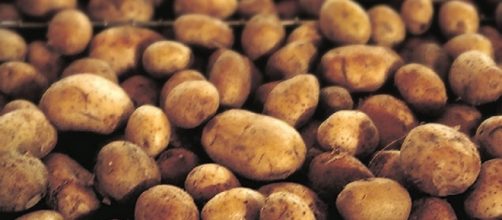When the Chang’e 4 spacecraft is launched by China to the moon, it will contain a small, three kg “mini ecosystem” that will include potatoes, silkworm eggs, and Arabidopsis seeds. The idea is to see how long the three organisms can survive on the Lunar Surface, according to the South China Morning Post.
Why potatoes, silkworms, and Arabidopsis?
When the silkworms hatch, they will breathe oxygen and emit carbon dioxide. The potatoes and Arabidopsis will absorb the CO2 and sunlight and emit oxygen. The purpose of the experiment is to see how long this miniature ecosystem will last on the lunar surface.
The answer will be of great interest to future lunar settlers who ideally will live in their own ecosystems, recycling air and water.
Potatoes are a common food crop, famously grown on the planet Mars during the hit film “The Martian” by a stranded astronaut played by Matt Damon and are relatively easy to grow under a variety of conditions. Silkworms were of great importance to the development of Chinese civilization, creating silk, a light, durable material used in clothing and other products. Arabidopsis is a small, flowering plant that is considered a weed but is used in genetic and microbiology research.
Temperature control and energy supply challenges
Two of the challenges surrounding the mini ecosystem was maintaining proper temperature and an energy supply.
The ideal temperature for the organisms to survive is between one and 30 degrees Celsius. However, the temperature on the surface of the moon ranging from -170 Celsius to 140 Celsius. The container of the mini-ecosystem has a system of insulation and light pipes to maintain the proper temperature while making sure the plants have adequate sunlight.
Batteries will provide energy for the container. The experiment will be live streamed on the internet to be shared with scientists and other interested parties around the world.
The mission of Chang’e 4
The Chang’e 4 will land a rover on the far side of the moon, a repeat in many ways of the Chang’e 3 that landed on the moon in December 2013.
The probe will be the first ever to land on the side of the moon facing away from the Earth. Data and images acquired by the Chang’e 4 will be sent back to Earth via a relay satellite to be launched to the Earth-Moon L2 point. One of the potential landing sites include the lunar south pole which is considered a prime location for a future lunar base due to the presence of water ice inside darkened craters. The robotic probe is scheduled to be launched toward the end of 2018. The mission is part of a long term program of lunar exploration.


